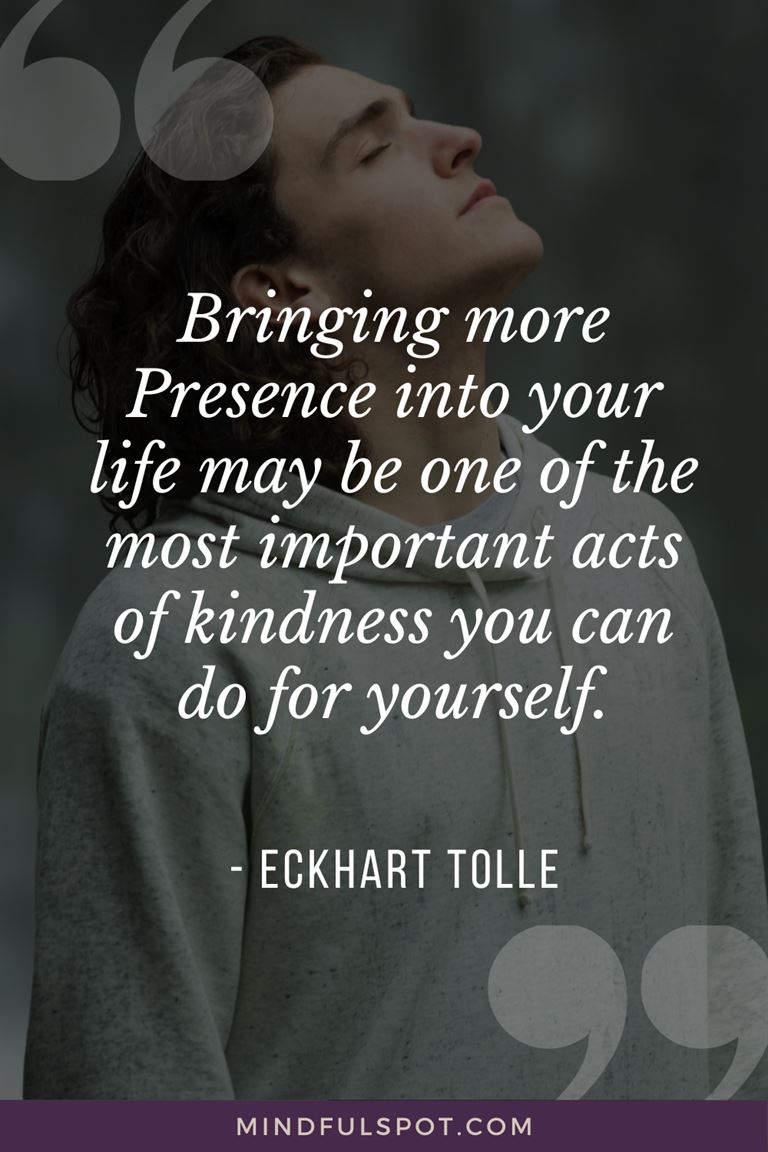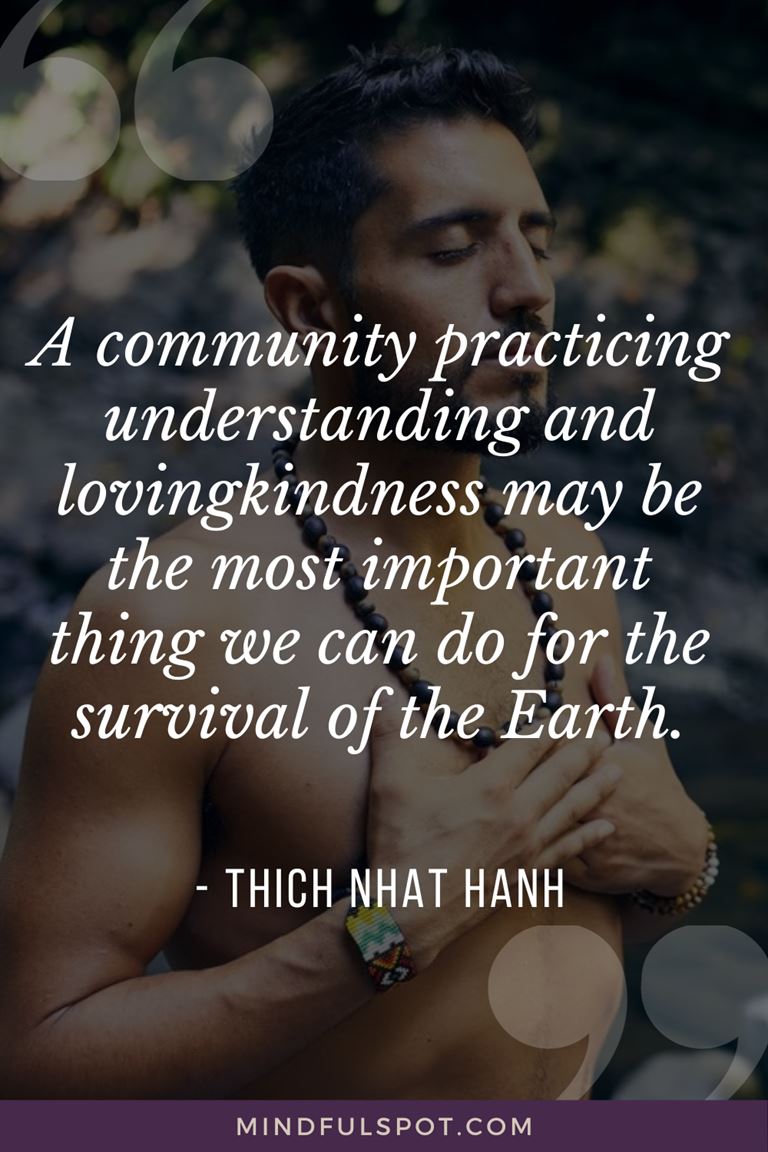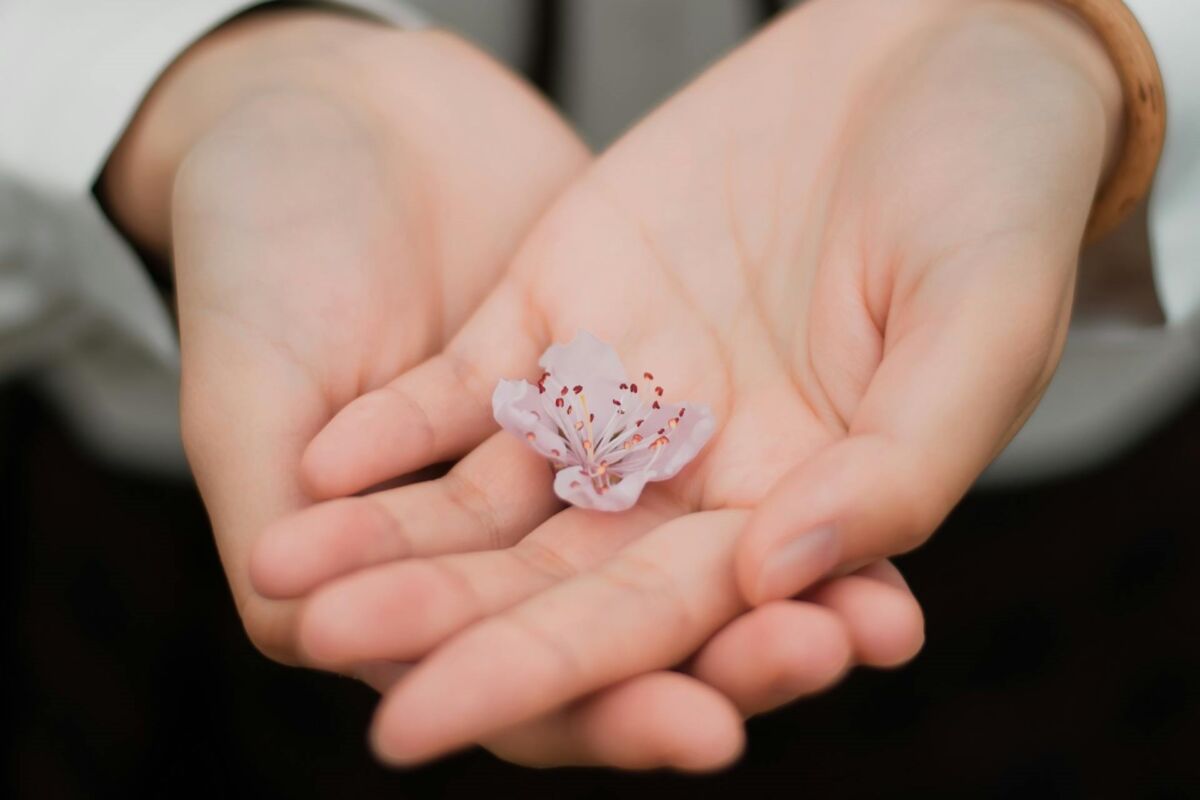You know the feeling: that lingering irritation or anger at someone long after the argument is over.
If you keep it bottled up, anger becomes an acid that eats you up inside. Fortunately, you have a few safe ways to pour it out, and one of them is lovingkindness meditation.
In this article, we’ll take a look at a simple lovingkindness meditation for beginners you can try right now.
What Is Lovingkindness Meditation?

Lovingkindness — or metta — is an ancient meditation practice aimed at helping you cultivate kindness towards yourself and other people in your life.
This technique creates a mental space that allows you to examine your response to someone without direct confrontation.
Very often, daily interactions with our adversaries hardly give us the opportunity to experience our feelings.
But when we meditate, we can work with our emotional reactivity and negative thoughts, gaining a deeper understanding of ourselves and our emotions.

FREE Self-Test: How Spiritual Are You?
Related article: “What Is Brahmavihara in Buddhism?”
Before you Begin
Set your timer to 10 minutes with 5 intervals, 2 minutes each — you can use an app on your smartphone to do this.
Prepare by sitting down in a comfortable position and paying attention to what you feel at this moment.
Whatever the feeling, experience it as it is, whether it’s pleasant, unpleasant, or neutral. In other words, be mindful of what’s going on in your mind and body.
This is the foundation for the metta bhavana meditation you’re about to do. When the foundation is there, you can build on top of it with more creativity and emotional awareness.
Lovingkindness Meditation for Beginners
Here are the five stages of metta from the book Buddhist Meditation: Tranquility, Imagination and Insight by Kamalashila.
1. Concentrate Your Attention on Yourself

Kamalashila talks about the importance of developing kindness towards yourself:
Experience your body, your emotions, and recollect your life generally. Now — and this is important — how does it feel when you do that? Be aware of any emotional responses that you have, like joy or sadness. Just feel them — you may or may not be able to describe them in words, but don’t even try. Just experience whatever is there.
Develop a response of friendliness and kindness towards yourself, wishing yourself happiness. If it helps, you could say to yourself, “May I be well and happy.” (Don’t just repeat the words, though — feel their meaning.) Keep your attention as constantly as you can on that friendly response, and patiently bring it back when it wanders.
2. Call to Mind a Good Friend
In the second stage of metta meditation, Kamalashila instructs us to direct energy towards a good friend:
Concentrate your attention on a good friend (you may have a visual image of them, a feeling, a general impression, or even a scene from some past event). At this stage, don’t choose someone for whom you might have “parental” feelings (they shouldn’t be too much older or younger than you are), or sexual feelings.
The traditional practice is to choose someone of the same sex and about the same age as yourself, and this is good advice. Experience your response to your friend — just as they are — and try to generate strong feelings of friendliness towards them. Establish and deepen the friendly feelings as much as you can.
3. Think of a Neutral Person.
In the third stage of lovingkindness meditation, Kamalashila tells us to think of a neutral person:
Think of a neutral person. A neutral person is someone for whom you don’t have any particular liking or dislike. Again, notice how you feel when you bring them to mind. The feeling will probably not be very distinct, but stay with what’s there and look for a more friendly, interested response. Wish them happiness — and work particularly to maintain your attention, because with a “neutral” person it is naturally less easy to keep interested.
4. Turn Your Attention to a Difficult Person

The most challenging part, Kamalashila notes, comes in the fourth step of developing metta towards a difficult person:
Turn your attention to a difficult person. This “difficult person” is someone you are not getting on with at the moment. Anyone whom you dislike, or who dislikes you, is an appropriate choice. Once again, experience how you actually respond to them in the meditation.
Don’t let assumptions about how you think they will make you feel get in the way of your actual response. Try to cultivate a fresh response, based on understanding and well-wishing. Without making any false compromises, try to let go any feelings of animosity that you may harbor. Keep your attention on that well-wishing response.
5. Concentrate on All Four People and the Whole World
Kamalashila instructs us to put everything together in the last stage of lovingkindness meditation:
Concentrate on all four people — that’s yourself, your friend, the neutral person, and the difficult person — and develop metta equally towards each of them, so that you feel no less friendliness for any one of them. If you like, imagine them all sitting around you. Spend a minute or so doing this.
Allow your metta to expand outwards — eventually expanding it out to include the whole world. Start with the people nearest you, perhaps in the same room or the same building. Then imagine everyone in the locality, then everyone in the town, city, or geographical area in which you happen to be.
Keep expanding the metta outwards like this in ever-widening circles — include everyone in the country, the continent, the other continents, the whole earth, the whole universe. Think about all those people, all the experiences they are undergoing right now, even as you are meditating. Include all animals, all sentient beings. Try to think of them all with an equally strong love and kindness.
10-Minute Guided Lovingkindness Meditation Audio
Here’s a 10-minute lovingkindness meditation by Kamalashila, courtesy of Free Buddhist Audio.
How to Use This Recording:
- Read the steps above.
- Choose a comfortable meditation posture.
- Press “play,” close your eyes, and listen to instructions.
- Don’t worry about prolonged silence. The sound of the bell will signal the start and end of each step.
What Is the Story Behind Lovingkindness Meditation?
Here’s the story behind the lovingkindness meditation as retold by a monk Piyadassi Thera.
The story goes that a band of monks, having received subjects of meditation from the Buddha, went to a forest to spend the rainy season in deep contemplation. Little did they know that their arrival would disturb the tree deities inhabiting the area.
These forest dwellers saw monks as uninvited guests and harassed them in diverse ways to scare them away. When monks went back to the Buddha and told him of their troubles, he instructed them in lovingkindness meditation and sent them back to the forest.
Upon their return, monks practiced the master’s teaching, permeating the whole atmosphere with radiant energy of metta or lovingkindness. The deities so touched by this power of kindness, allowed the monks to meditate in peace.
Related article: “What Did the Buddha Teach About Loving Your Enemies?”
Optional Journaling Prompts
Here are optional journaling prompts for you to reflect on your meditation session. You can write the answers in your mind or in your notebook.
- When was the last time someone was kind to you? How did it make you feel?
- When was the last time you were kind to someone else?
- What small act of kindness can you do today?
These are just suggestions. As you practice more and more, the questions you ask yourself will change, both in depth and scope..
In Conclusion

FREE mindfulness resources for stress relief
We should always strive to be kind towards other people despite any differences we may have — it’s a deep spiritual practice that improves our relationships and contributes to a sense of well-being and happiness. To help you get started, I’ve put together this free worksheet you can download below.
I’m a freelance writer and mindfulness advocate behind this blog. I started my meditation practice in 2014, and in 2017 I launched this website to share what I learn with others. Here are the three things you can do here:
1. Schedule a free consult if you want to learn Buddhist meditation.
2. Download free mindfulness resources for stress relief
3. Join Patreon for exclusive content and community meetings.








